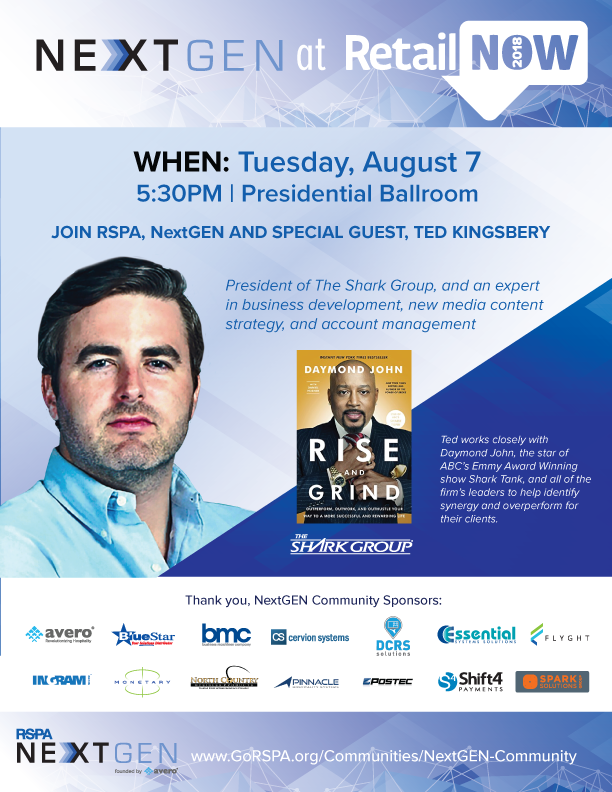By: Jim Roddy & Chris Arnold, RSPA
For the second consecutive year, the RSPA conducted a focus group with representatives from at least a dozen member companies to answer the question, “What does business look like for your organization next year?”
Last year’s session was a mix of optimism and uncertainty (For the Retail IT Channel, Will 2024 Be a “Grow” Year or a “No” Year?).
This year’s discussion left zero doubt: every participating company is expecting moderate to strong growth in 2025. Every business model – VARs, ISVs, and vendors – expressed broad optimism.
The group also made clear their growth won’t be a result of some outside force. Success will hinge on innovation, specialization, and collaboration.
We fed the focus group transcript into an AI tool and asked it to condense the hour-long discussion into about 500 words. Portions have been edited for clarity – and because AI doesn’t know the channel as well as the RSPA community. :)
AI and Automation: Driving Efficiency and Personalization
Artificial Intelligence (AI) and automation will dominate the retail technology landscape in 2025. Solution providers and merchants are integrating AI to optimize internal operations, streamline workflows, and enhance customer engagement. Tools like remote process automation (RPA) and machine learning are improving efficiency by automating repetitive tasks and providing actionable insights.
AI’s growing role in personalized marketing and demand generation allows VARs and ISVs to move away from broad campaigns, focusing instead on account-based strategies that drive measurable results. In customer support, AI-driven tools are optimizing help desks and reducing response times, while advanced analytics help predict trends, manage inventory, and refine pricing strategies.
VARs and ISVs who fail to incorporate AI into their operations risk falling behind as competitors capitalize on its transformative potential.
Specialization and Micro-Vertical Focus
The trend toward specialization continues as solution providers prioritize micro-verticals for growth. Instead of broad, one-size-fits-all solutions, VARs and ISVs are targeting niche markets; mentioned by the focus group participants were grocery, healthcare, and service-based verticals like salons and fitness centers.
Technologies like RFID and self-checkout solutions are driving this trend, enabling faster, more accurate inventory management and customer throughput. RFID, in particular, is seeing renewed demand as merchants seek to enhance efficiency and security.
Focusing on micro-verticals allows VARs and ISVs to differentiate themselves and deliver tailored, high-value solutions to specific customer segments.
Partner Collaboration: A Strategic Imperative
Collaboration among vendors, resellers, and partners remains a critical growth strategy. Vendors and distributors are shifting from rigid, traditional partner programs to flexible, tailored approaches that empower different partner types.
Partner-to-partner collaboration is also increasing as VARs team up to tackle complex implementations, particularly for larger customers. Vendors are enabling this by developing co-selling tools and automation platforms that streamline partnerships and resource-sharing.
Collaboration extends beyond sales to include shared marketing efforts and event participation, with VARs and ISVs optimizing budgets through cost-sharing and joint initiatives.
Shifting Revenue Models: From Hardware to Services
The industry continues to move away from hardware-centric models, prioritizing higher-margin, service-based revenue streams. Declining hardware margins have pushed VARs to focus on subscriptions, SaaS, and managed IT services that provide recurring, predictable income.
While hardware margins shrink overall, technologies like RFID, self-checkout, and electronic shelf labels (ESLs) are gaining traction, particularly in grocery and retail. Additionally, hardware refresh cycles, driven by operating system updates, are creating opportunities for targeted growth.
Economic Outlook: Renewed Confidence
Economic uncertainty weighed on U.S. businesses throughout 2024, but that’s been reduced post-election. Some merchants are beginning to increase spending as they feel more secure in their financial outlooks. Lower interest rates are expected to further encourage investments in technology and innovation.
This optimism is particularly evident in solution providers who offer new technologies to address key challenges like labor shortages, shrink prevention, and evolving customer expectations.
2025: A Year of Transformation
As mentioned earlier, the retail technology industry in 2025 will reward solution providers that innovate, specialize, and collaborate. Those organizations will lead the way while those slow to adapt risk being left behind.



